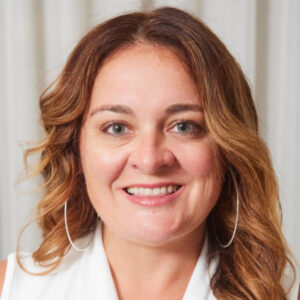“Miss, you do know that one person does the homework and then passes it around the lunch table for everybody else to copy, right?”
— 9th grade student, circa 2005
Welcome to My “Why”
I probably should have known. I vaguely remember the same practice from back when I was in high school. Homework counted 15%, maybe 30%, of our grade in some classes. So of course it needed to get “done.” But suddenly, it was one of my students saying it to me, the teacher. She wasn’t telling me this so that I would scold all of the students who sat around copying that one paper, or so that I would show up at lunch and witness the behavior to catch them all in the act. She was telling me because they wanted something different, and this was their way of asking for it.
It was very early in my teaching career when I realized that standard grading practices were not going to work for me or for my students. What did those homework grades even mean? Why were they contributing to this “mark” on their transcript? Wasn’t that supposed to signify learning? I decided to adopt a very simple but different approach to teaching. I wanted every student to get what they needed to keep moving forward. Therefore, everything that we did together would be in service of that goal. Oh yeah…and we were going to have fun. Because there was no way on earth that I was going to be the boring teacher.
As a teacher, I did a lot of co-creating with my students. We would write and solve problems together. One year, we all wanted to watch the final four basketball games during class, so we wrote some math problems about basketball and then we had to watch them. They were our primary source of relevant information, after all. There is so much amazing mathematics in basketball, such as: What is the probability that a player who shoots 80% from the free throw line makes both shots when at the line? But now I am in a position where I get to see a lot of different classrooms across the country and talk to people working in education, and I do not hear stories of joy. I do not hear stories of challenging longstanding and outdated practices of grading, seat time, and assessment. I do not hear stories of students having agency and helping to direct their learning. Until now.
For the past year and a half, I have been fortunate to work with an outstanding team of educator designers from across the country on a project that seeks to dismantle some of these outdated practices and center the voices of the very people who matter most: the students. The XQ High School Math Badging Initiative seeks to upend some of the existing high school systems and structures that create barriers in the very places where students should get to see opportunities. For decades, we have conveniently dodged the question often asked by eager students in high school math spaces: “When am I going to use this?” If we were being honest, we might have answered: “You probably won’t. But let’s learn it anyway because it’s in the book.”
As the project lead from Student Achievement Partners for the math badging initiative, I share with you some of my greatest hopes, followed by some short interviews with our amazing design team of educators from across the country. Here are three things that I hope we are able to accomplish together.
What do we hope to accomplish with badging?
Greater Student Success
In the United States, Algebra 1 is viewed as one of the biggest gatekeepers in K-12 mathematics education. It is a required course in most states, so students all take it once and many students more than once—and not because they liked it so much the first time. They weren’t successful. One widely cited study of a group of Northern California school districts found that 44.3 percent of students were taking Algebra 1 at least twice, with even higher rates for special education students, English language learners and Hispanic students (Fong, et al., 2014). For a course with such high repetition rates, there has been relatively little done to drastically rethink our approach to the course. Enter badging. What is badging? According to XQ Institute’s website,
This (badging) system comprises 23 individual badges, each representing a set of core mathematical concepts and practices. Bigger than a standard but smaller than a course, math badges provide administrators, educators, and students with building blocks to create more flexible math pathways that better connect student learning to interests and career opportunities.
Additionally, the badging system is being designed with a success-orientation approach, which stands in stark contrast to traditional grading practices where we often accept high failure rates. The idea that some students will make it and some students will not is a widely held and defended position in high school mathematics. But what if we asked instead: “How do we give every child what they need to keep moving forward?” Then we design a different system.
Because the grain size of a badge is smaller than a typical course, students and teachers can more easily articulate the learning goals of the badge. Students are also encouraged to do additional learning when necessary and resubmit artifacts of their work to demonstrate their learning related to the outcomes specified in each badge. So instead of marking a task wrong and moving on as we often see, badging articulates a more humanizing approach to working with students where feedback and revision processes allow students to refine and improve their work over time. Badging in these spaces can prevent a large swath of students from being forced into a pass/fail system that creates a threshold regarding their future success and motivation. It lets students own their learning and strive for academic success throughout high school and college in ways that meet their needs, interests, and motivations.
Flexibility
Greater flexibility means that students can complete the requirements for one badge while also moving on to begin another. For example, a student can begin work on M103: Modeling with Functions of Quadratic Type even if they are still wrapping up the requirements of M104: Modeling with Functions of Exponential Type. We built the badging frameworks to have as few prerequisites as possible, encouraging users to implement a low-floor, high-ceiling approach for the whole badge (although this phrase is more commonly used with individual math tasks). In at least one of the three states where we are piloting the badging system this year, we are already seeing conversations about how districts will allow students to continue working on a badge past where the semester ends, and are making the system-level adjustments to accommodate this flexibility. This type of disruption to the system is helpful because it communicates outwardly that this is not business as usual. This is not a fresh coat of paint on the same old structure— it is disruptive in ways that other initiatives have not been.
But flexibility isn’t just about scheduling. The badging system offers flexibility in other ways as well. We can add badges down the road without completely overhauling “a course.” Someone recently suggested adding a math-adjacent badge on machine learning—possibly as an elective or maybe someday as a unit that satisfies some quantitative requirement. Thus, badging provides us the space to adapt to a rapidly changing future, such as the recent advancements in artificial intelligence which force us to rethink our instructional practices. In any case, we wouldn’t have to disrupt the existing structure to incorporate the new badge; we simply write the framework and help folks understand how and when to use it (or not).
Belonging, Agency, and Relevance
Nothing changes if nothing changes. And for students, the most important change is that they see mathematics education spaces as places for them— to explore, to discover, to connect, and to view the work as relevant and useful. What would a system look like if we really centered students? What would they design for themselves if we turned over the authoring of the system to them? To ensure that we are meeting our goals of belonging, agency and relevance, we frequently seek insights about the learning from those doing the learning.
“I enjoyed being able to apply what I’m doing in math class to the real world. Sometimes I have no idea why we have to learn what we do, and this just made sense.”
— High school student who completed a performance assessment on the cost of speeding for M102: Modeling with Linear Functions and Equations
“This could define our future.”
— High school student who completed a performance assessment on the impacts of closing their school cafeteria for M111: Modeling with One Variable Measurement Data
Too many efforts to rethink high school mathematics have fallen short on giving students voice, choice, and reasons to engage. I am a strong believer that the previous two things I wrote about won’t matter at all if we don’t act on this one.
Meet the Team
I invite you now to meet and listen to some of the amazing educators from across the country who have lent their time and talents to this effort.





